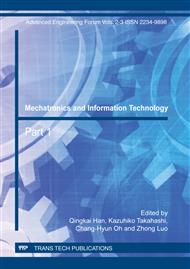p.649
p.655
p.661
p.667
p.673
p.678
p.683
p.688
p.694
Effect of Draw Blank Velocity on Steel Fluid Flow Field in Blank Continuous Caster Crystallizer
Abstract:
As the heart of continuous caster, crystallizer is the cradle of most surface deficiencies and inside quality problems in steel blank. Steel blank surface quality, nonmetal impurity content and relevant distribution rely on the steel fluid solidification behavior namely steel fluid flow field distribution on great extent. For the high temperature steel fluid has big kinetic energy, so, the immixture dregs, solidification heat conduction, temperature field distribution in crystallizer, solidification blank shell thickness distribution and continuous caster blank quality were influenced by steel fluid flow. The numerical simulation analysis on flow field and temperature field in crystallizer were conducted in this paper. Three dimensions turbulent flow model was adopted to computate flow field. The heat conduction was ignored on draw blank direction in temperature field. The conjugate heat conduction model of ANSYS CFX was adopted to analyze temperature field, which can consider heat conduction in solid layer and convection heat conduction between solid shell face and fluid simultaneity. The draw blank velocity was found by setting crystallizer water gap insertion depth and crystallizer water gap angle, which can obtain reasonable flow field in blank crystallizer.
Info:
Periodical:
Pages:
673-677
Citation:
Online since:
December 2011
Authors:
Permissions:
Share:
Citation:


